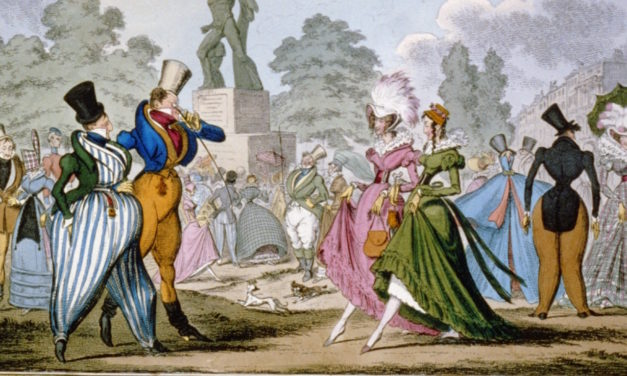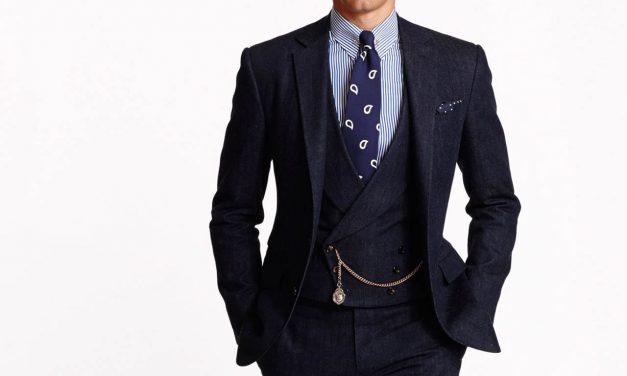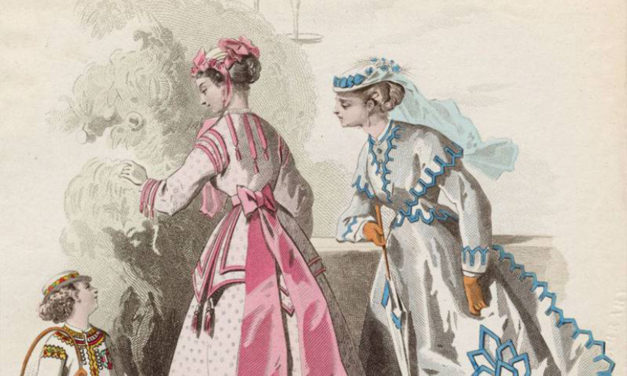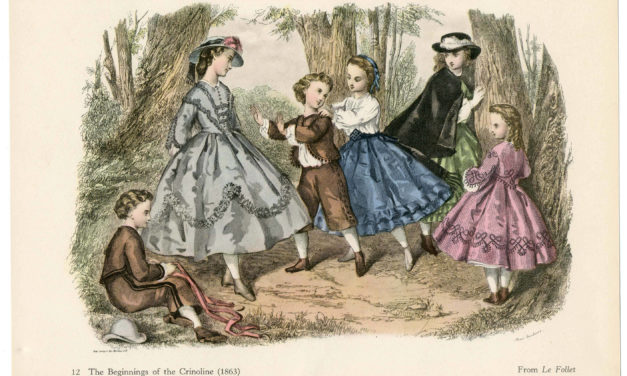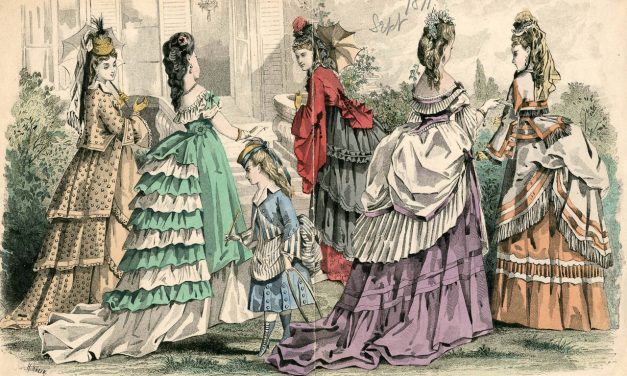1820-1829
The 1820s were a transitional period away from the “Empire” silhouette and Neoclassical influences. Instead, Romanticism became the chief influence on fashion, as Gothic decoration lavished dresses and historicism inspired styles borrowed from past centuries. Layers of color and an increasingly exaggerated silhouette, for both men and women, created a style of dramatic display by the end of the decade.
Read More
